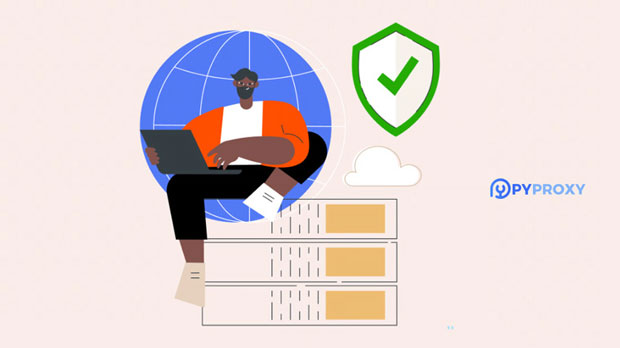Streaming YouTube videos can often face challenges such as buffering, geo-restrictions, or network throttling, which can significantly reduce the quality of the viewing experience. Using a proxy server can help mitigate these issues by masking your real IP address, changing your location, or bypassing certain network restrictions. However, not all proxy protocols are equally effective for streaming content. Understanding Proxy ProtocolsBefore diving into the specifics of proxy protocols for YouTube streaming, it's important to understand what a proxy server does. A proxy server acts as an intermediary between your device and the internet. When you use a proxy, your internet traffic is routed through the proxy server instead of going directly to its destination. This can provide benefits such as improved privacy, enhanced security, and the ability to bypass geo-blocked content.There are different types of proxy protocols, and the choice of protocol can significantly impact the performance of your streaming experience. The main proxy protocols are HTTP, HTTPS, SOCKS5, and more specialized protocols like VPNs (Virtual Private Networks). Each of these has its own strengths and weaknesses when it comes to streaming content like YouTube videos.HTTP Proxy: Basic but LimitedThe HTTP proxy is the most basic form of proxy and is commonly used for browsing the web. It works by handling requests made through the HTTP protocol. While it may seem like a simple and fast solution for YouTube streaming, it has significant limitations for video streaming. The main drawback is that it does not support encryption. Without encryption, your data is vulnerable to interception, and it may expose your browsing activity to external parties.Additionally, HTTP proxies are not designed for handling large video data streams. You may encounter buffering or poor-quality streaming, especially when accessing high-definition videos. HTTP proxies are often insufficient when trying to bypass geo-restrictions, as they are usually easy for websites to detect.HTTPS Proxy: Improved Security and Better StreamingHTTPS proxies are a step up from HTTP proxies in terms of security. They encrypt the data transmitted between your device and the proxy server, which enhances privacy and security. This encryption is especially important when streaming videos on YouTube, as it helps protect your data from hackers and third-party surveillance.While HTTPS proxies offer better security than HTTP, they still have limitations when it comes to performance. Like HTTP proxies, HTTPS proxies are not designed to handle large data streams efficiently. However, they can provide a better user experience for YouTube streaming compared to HTTP proxies, especially if you're concerned about privacy.Another advantage of HTTPS proxies is their ability to bypass geo-restrictions more effectively than HTTP proxies. You can use them to access content that may be blocked in your region. However, performance may still be suboptimal, especially when streaming high-quality videos. socks5 proxy: The Best Choice for Streaming YouTubeWhen it comes to streaming YouTube videos with minimal issues, the SOCKS5 proxy is the best choice. SOCKS5 is a highly versatile proxy protocol that supports all types of internet traffic, including video streams. It provides a balance between speed, security, and functionality, making it ideal for streaming high-quality videos on platforms like YouTube.One of the key benefits of sock s5 proxies is that they can handle large volumes of data without significantly affecting performance. This makes them an excellent choice for streaming YouTube videos in HD or even 4K resolution. SOCKS5 proxies also support both TCP and UDP protocols, which are important for real-time streaming. UDP, in particular, is faster and more efficient for video streaming because it reduces the need for error-checking, ensuring smooth playback.Moreover, SOCKS5 proxies are generally less detectable by websites compared to HTTP and HTTPS proxies. This makes them effective for bypassing geo-restrictions and accessing content that may be blocked in your region. However, it's important to note that SOCKS5 proxies do not provide encryption by default. While this can improve streaming speeds, it also means your data is not encrypted unless you use a separate encryption method, such as a VPN.VPNs: A Secure but Resource-Heavy OptionAlthough not a traditional proxy, VPNs (Virtual Private Networks) are often used for streaming YouTube videos. A VPN works by encrypting your internet traffic and routing it through a server located in a different country. This allows you to access geo-restricted content while maintaining a high level of privacy and security.VPNs are particularly useful for bypassing government censorship and accessing YouTube content that may be blocked in certain countries. They are also effective in preventing ISPs (Internet Service Providers) from throttling your connection, which is common during video streaming. However, VPNs tend to be more resource-intensive compared to proxy servers. They can reduce your internet speed, especially if the VPN server is far from your location or if the server is overcrowded.Despite these drawbacks, VPNs can offer a secure and reliable streaming experience, particularly for those who prioritize privacy and security over raw performance. Some VPNs are optimized for streaming and can provide a stable connection for high-quality YouTube streams.Conclusion: Choosing the Right Proxy Protocol for YouTube StreamingWhen it comes to streaming YouTube videos, the choice of proxy protocol can significantly impact your experience. While HTTP and HTTPS proxies provide basic functionality and some level of privacy, they are not ideal for streaming high-quality videos. SOCKS5 proxies, on the other hand, offer the best balance between speed, security, and performance, making them the top choice for YouTube streaming.For those who prioritize privacy and security, a VPN can be an excellent option, though it may not always deliver the fastest speeds. Ultimately, the right proxy protocol depends on your specific needs, such as whether you're looking for security, speed, or the ability to bypass geo-restrictions. By understanding the strengths and weaknesses of each protocol, you can choose the one that best suits your YouTube streaming needs.
Jun 24, 2025






















































